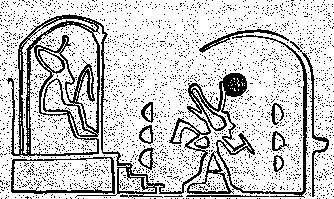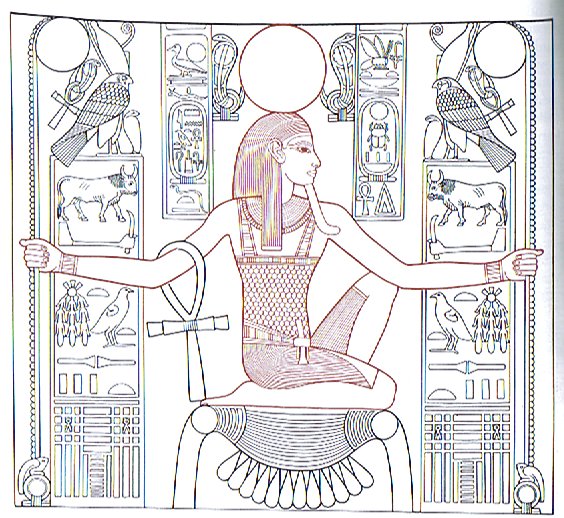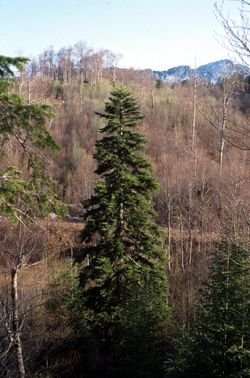|
TRANSLATIONS
Outside sun is moving northwards in a hasty manner - spring is here. There is a Swedish expression: 'mellan hägg och syren' ('between bird-cherry and lilac') used to describe the speed of change in nature during this time of the year. First the bird-cherry trees start to flower and then the lilac trees, but the interval between them is very short - just a week or so. Spring is running so very fast at this high latitude (ca 65º N) and summer will be here sooner than we wish. Remarkably we still in civilized Sweden have 'tree lore', we use different kinds of trees to define the seasons. We bring in an evergreen tree at Christmas as a mark for that time and at the opposite end of the year, midsummer, we use birch branches to decorate outside, yet another tree which marks our time. In The White Goddess many pages are devoted to describe what kinds of trees belonged to which seasons. This is an example (the kinds of trees may be different in different localities):
At last I have come to insight: I have believed that GD37 (henua) was an abstract concept derived from measurement staffs (e.g. the gnomon), but that - I now understand - probably is not the case. Instead the system of using different kinds of trees to indicate seasons is the origin of henua. It is a picture of a tree. But being a picture of a tree the meaning becomes 'season'. "He [Eric Thompson] established that one sign, very common in the codices where it appears affixed to main signs, can be read as 'te' or 'che', 'tree' or 'wood', and as a numerical classifier in counts of periods of time, such as years, months, or days. In Yucatec, you cannot for instance say 'ox haab' for 'three years', but must say 'ox-te haab', 'three-te years'. In modern dictionaries 'te' also means 'tree', and this other meaning for the sign was confirmed when Thompson found it in compounds accompanying pictures of trees in the Dresden Codex." (Coe) The Silver Fir is the first tree of the year, it is located in the X-area. "The first tree is the silver fir, a female tree with leaves closely resembling the yew's, sacred in Greece to Artemis the Moon-goddess who presided over childbirth, and the prime birth-tree of Northern Europe, familiar in the Nativity context. In Orkney, according to Roger's Social Life in Scotland, mother and child are 'sained' soon after delivery with a flaming fir-candle whirled three times round the bed. It is remarkable that ailm [silver fir], in Old Irish, also stood for the palm, a tree not native to Ireland (though it grew well on my grandfather's estate in Co. Kerry). The palm, the birth-tree of Egypt, Babylonia, Arabia and Phoenicia, gives its name phoenix ('bloody') to Phoenicia, which formerly covered the whole Eastern Mediterranean, and to the Phoenix which is born and reborn in a palm. Its poetic connexion with birth is that the sea is the Universal Mother and that the palm thrives close to the sea in sandy soil heavily charged with salt; without salt at its roots a young palm remains stunted. The palm is the Tree of Life in the Babylonian Garden of Eden story. Its Hebrew name is 'Tamar' - Tamar was the Hebrew equivalent of the Great Goddess Istar or Ashtaroth; and the Arabians adorned the palm of Nejran as a goddess, annually draping it with women's clothes and ornaments ... But the silver fir, which also likes sandy soil and sea breezes, is as old a birth-tree as the palm, being the tree under which the God of Byblos was born: the prototype of the pre-dynastic Osiris of Egypt." (The White Goddess) Remarkable. Niu - as Metoro explained GD18 - is a palm tree, and according to how I 'read' the X-area a palm tree would be exactly perfect there. I repeat some earlier remarks about this:
"The king, wearing now a short, stiff archaic mantle, walks in a grave and stately manner to the sanctuary of the wolf-god Upwaut, the 'Opener of the Way', where he anoints the sacred standard and, preceded by this, marches to the palace chapel, into which he disappears. A period of time elapses during which the pharaoh is no longer manifest. When he reappears he is clothed as in the Narmer palette, wearing the kilt with Hathor belt and bull's tail attatched. In his right hand he holds the flail scepter and in his left, instead of the usual crook of the Good Shepherd, an object resembling a small scroll, called the Will, the House Document, or Secret of the Two Partners, which he exhibits in triumph, proclaiming to all in attendance that it was given him by his dead father Osiris, in the presence of the earth-god Geb. 'I have run', he cries, 'holding the Secret of the Two Partners, the Will that my father has given me before Geb. I have passed through the land and touched the four sides of it. I traverse it as I desire.' ... " (Campbell 2)
According to Wilkinson renpet is a picture of a branch from the date-palm: Phoenix dactylifera. That latin name I 'translate' as 'magic fire-bird which reappears again and again and who makes fingers'. Which is interesting e.g. because I think that the rongorongo signs have fingers as symbols for light - remember also the story about Maui and Mahuika (whose finger-nails created fire). Furthermore, they removed the leaves and then for each year they made a notch. The ancient Egyptian word genut (-t means female I believe), which was derived from genu = branch, was used with the meaning 'deed', 'annals'. Our word 'genus' certainly must have some relationship with the Egyptian genu. 'Genuflexion' means to bend the knees. There is a field of common meaning beteween 'branches', 'limbs', and the unfolding of reality in terms of 'seasons' ... Wilkinson has another picture which shows the ancient god Heh holding two palm branches in his hands:
This arrangement reminds me not only about the Tiahuanaco sun door, but also about Rb1-105:
Maybe the marks on the head of the bird indicates 'fire' (symbolized by feathers) to tell us that we see the Phoenix in action. The trees may then be coconut palms (niu) and we may think of his cutting with 'beak-knife' as making notches. According to Wilkinson Heh personified eternity: The semantic meaning of the word heh was 'one million' or a very large number. The iconography in the picture therefore seems to tell us heh-em-renput, 'a million years'. The palm branches (renpet) in the picture rest on tadpoles symbolizing 100 000 (meaning fruitfulness, birth, regeneration etc) and the tadpoles are sitting on schen, signs which symbolize eternity. GD18 (niu)
may also represent eternity, indicated by the four phoenix 'branches' and the oval (cyclical) bottom. Man is eternal when he has much progeny, and at this point I remember that the Hawaiian volcano goddess Pele has fire at her top: '... When the man, Ulu, returned to his wife from his visit to the temple at Puueo, he said, 'I have heard the voice of the noble Mo'o, and he has told me that tonight, as soon as darkness draws over the sea and the fires of the volcano goddess, Pele, light the clouds over the crater of Mount Kilauea, the black cloth will cover my head. And when the breath has gone from my body and my spirit has departed to the realms of the dead, you are to bury my head carefully near our spring of running water. Plant my heart and entrails near the door of the house. My feet, legs, and arms, hide in the same manner ...'
|
||||||||||||||||||||||||||||||||||||||||||||






